Harry Potter and the Philosophers Stone (film)
7.2 /10 1 Votes
80% Rotten Tomatoes Film series Harry Potter Country United KingdomUnited States | 7.5/10 IMDb 64% Metacritic Genre Adventure, Family, Fantasy Duration Language English | |||||||||||||||||||||||||||||||||
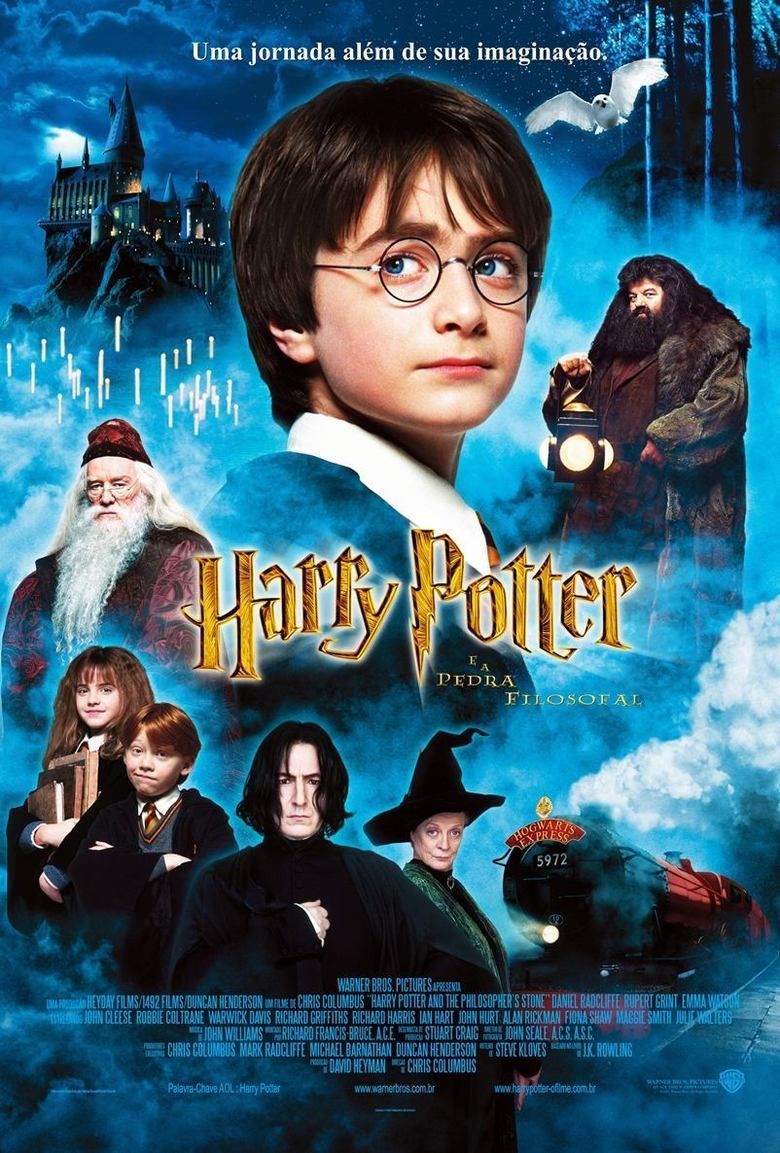 | ||||||||||||||||||||||||||||||||||
Release date 4 November 2001 (2001-11-04) (London premiere)16 November 2001 (2001-11-16) (United Kingdom & United States) Initial release November 4, 2001 (United Kingdom) Cast (Harry Potter), (Ron Weasley), (Hermione Granger), (Professor Albus Dumbledore), (Professor Minerva McGonagall), (Rubeus Hagrid) Similar movies , , , , Harry Potter and the Half-Blood Prince , Kiki's Delivery Service Tagline Let the Magic Begin. | ||||||||||||||||||||||||||||||||||
Harry potter and the philosopher s stone soundtrack bande originale
Harry Potter and the Philosopher's Stone (released in some countries as Harry Potter and the Sorcerer's Stone) is a 2001 British-American fantasy film directed by Chris Columbus and distributed by Warner Bros. Pictures. It is based on the novel of the same name by J. K. Rowling. The film is the first instalment in the long-running Harry Potter film series, and was written by Steve Kloves and produced by David Heyman. Its story follows Harry Potter's first year at Hogwarts School of Witchcraft and Wizardry as he discovers that he is a famous wizard and begins his education. The film stars Daniel Radcliffe as Harry Potter, with Rupert Grint as Ron Weasley, and Emma Watson as Hermione Granger.
Contents
- Harry potter and the philosopher s stone soundtrack bande originale
- Plot
- Cast
- Development
- Filming
- Design and special effects
- Music
- Differences from the book
- Marketing
- Home media
- Box office
- Critical response
- Accolades
- References

Warner Bros. bought the film rights to the book in 1999 for a reported £1 million ($1.275 million) Production began in the United Kingdom in 2000, with Chris Columbus being chosen to create the film from a short list of directors that included Steven Spielberg and Rob Reiner. Rowling insisted that the entire cast be British or Irish, and the film was shot at Leavesden Film Studios and historic buildings around the United Kingdom.
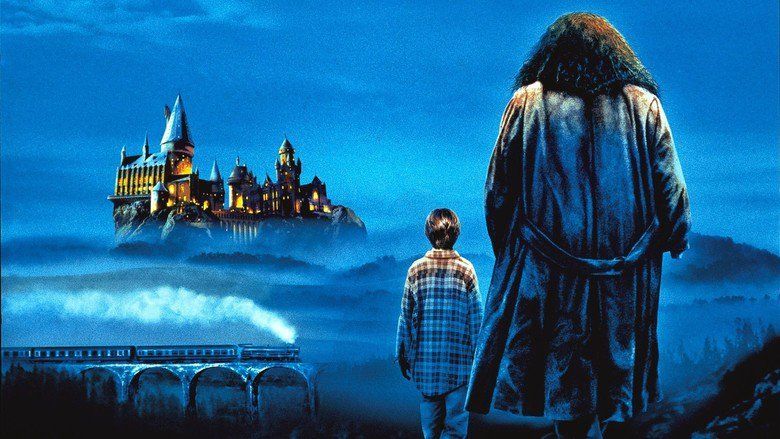
The film was released in theatres in the United Kingdom and the United States on 16 November 2001. It became a critical and commercial success, grossing $974.8 million at the box office worldwide. It was the highest grossing film of 2001. It was nominated for many awards including the Academy Award for Best Original Score, Best Art Direction and Best Costume Design. It was followed by seven sequels, beginning with Harry Potter and the Chamber of Secrets in 2002 and ending with Harry Potter and the Deathly Hallows – Part 2 in 2011, nearly ten years after the first film's release. It is the 32nd-highest-grossing film of all time and the second-highest-grossing film in the Harry Potter series behind Harry Potter and the Deathly Hallows – Part 2.

Plot

Albus Dumbledore, Minerva McGonagall, and Rubeus Hagrid, professors of Hogwarts School of Witchcraft and Wizardry, deliver an orphaned infant named Harry Potter to his only remaining relatives. Ten years later, Harry inadvertently causes an accident on a family outing and begins receiving unsolicited letters by owl. Finally, Hagrid re-appears and informs Harry that he is actually a wizard and has been accepted into Hogwarts School of Witchcraft and Wizarding. He also tells Harry that he has become well-known in the wizarding world for being the only person ever to survive a Killing Curse, leading to his nickname "The Boy Who Lived". Hagrid takes Harry to Diagon Alley to buy school supplies, then takes him to King's Cross station to board a train to the school.
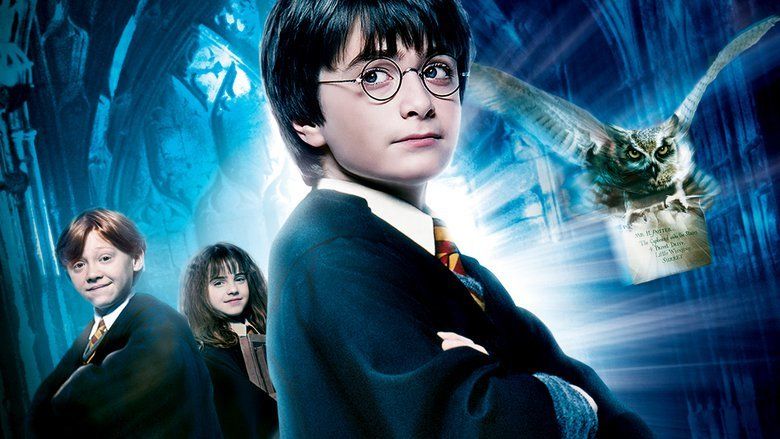
Harry meets Ron Weasley, a boy from a large but poor wizarding family, and Hermione Granger, a witch born to non-magical parents while on the train. He also encounters Draco Malfoy, a spoiled child from a wealthy wizarding family who eventually becomes Harry's biggest rival. At the school, the students assemble in the great hall, where Harry and all the other first-year students are sorted between four houses: Gryffindor, Hufflepuff, Ravenclaw, and Slytherin. The Sorting Hat debates at length which house to sort Harry into. Harry begs not to be placed into Slytherin, due to its reputation for dark wizards, and is eventually placed into Gryffindor along with Ron and Hermione.

At Hogwarts, Harry begins learning wizardry and discovers more about his past and his parents. He discovers that his parents were killed by Lord Voldemort, a powerful dark wizard who had also attempted to kill him. Harry is also recruited for Gryffindor's Quidditch team as a Seeker, which is rare for first-year students. While exploring the school one night, Harry and his friends discover a giant three-headed dog named Fluffy in a restricted area of the school. They later find out Fluffy is guarding the Philosopher's Stone, an item that can be used to grant its owner immortality. Harry suspects that his potions teacher Severus Snape is trying to obtain the stone in order to return Voldemort to a human form. The children learn from Hagrid that Fluffy will fall asleep if played music. Harry, Ron, and Hermione decide to try and find the stone before Snape does, but discover someone has already put Fluffy to sleep. They get past Fluffy and face a series of safeguards which include surviving a deadly plant known as Devil's Snare, a room filled with aggressive flying keys, and a dangerous life-sized game of chess.
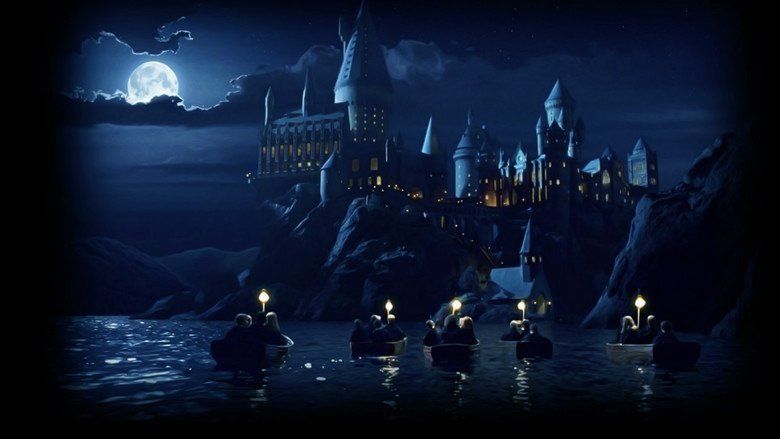
After getting past the tasks, Harry discovers that it was Defence Against the Dark Arts teacher Professor Quirrell who was trying to claim the stone. Quirrell removes his turban and reveals Voldemort to be living on the back of his head. Through an enchantment placed by Professor Dumbledore, Harry finds himself in possession of the stone. Voldemort attempts to convince Harry to give him the stone by promising to bring his parents back from the dead, but Harry refuses. Quirrell attempts to kill him and take the stone, but Harry's touch turns Quirrell into dust. When Harry gets back up, Voldemort's spirit rises from Quirrell's ashes and passes through Harry.
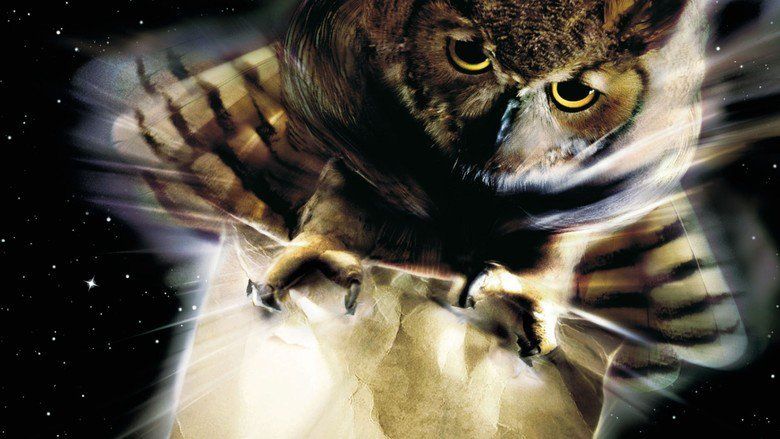
Harry wakes up in the school's hospital wing with Dumbledore at his side. Dumbledore explains that the stone has been destroyed and that Ron and Hermione are both fine. The headmaster reveals that Harry was able to defeat Quirrell because when Harry's mother died to save him, her death gave Harry a love-based protection against Voldemort. Harry, Ron, and Hermione are rewarded with house points for their heroic performances, giving Gryffindor enough points to win the House Cup.
Cast
Rowling insisted that the cast be kept British. Susie Figgis was appointed as casting director, working with both Columbus and Rowling in auditioning the lead roles of Harry, Ron and Hermione. Open casting calls were held for the main three roles, with only British children being considered. The principal auditions took place in three parts, with those auditioning having to read a page from the novel, then to improvise a scene of the students' arrival at Hogwarts, and finally to read several pages from the script in front of Columbus. Scenes from Columbus' script for the 1985 film Young Sherlock Holmes were also used in auditions. On 11 July 2000, Figgis left the production, complaining that Columbus did not consider any of the thousands of children they had auditioned "worthy". On 8 August 2000, the virtually unknown Daniel Radcliffe and newcomers Rupert Grint and Emma Watson were selected to play Harry Potter, Ron Weasley and Hermione Granger, respectively.
Rik Mayall was cast in the role of Peeves, a poltergeist who likes to prank students in the novel. Mayall had to shout his lines off camera during takes, but the scene ended up being cut from the film. David Bradley portrays Argus Filch, the loathed caretaker of Hogwarts. Tom Felton portrays Draco Malfoy, the trio's enemy. Zoë Wanamaker portrays Madam Hooch, the flying teacher of Hogwarts. Sean Biggerstaff portrays Oliver Wood, captain of the Gryffindor Quidditch team. James and Oliver Phelps appear as Fred and George Weasley, Ron's older twin brothers. Chris Rankin portrays Percy Weasley, Ron's older Prefect brother. Bonnie Wright portrays Ron's younger sister, Ginny Weasley. Harry Melling plays Dudley Dursley, Harry's Muggle cousin. Matthew Lewis, Devon Murray and Alfred Enoch portray Neville Longbottom, Seamus Finnigan and Dean Thomas, respectively.
Development
In 1997, producer David Heyman searched for a children's book that could be adapted into a well-received film. He had planned to produce Diana Wynne Jones' novel The Ogre Downstairs, but his plans fell through. His staff at Heyday Films then suggested Harry Potter and the Philosopher's Stone, which his assistant believed was "a cool idea." Heyman pitched the idea to Warner Bros. and in 1999, Rowling sold the company the rights to the first four Harry Potter books for a reported £1 million (US$1,982,900). A demand Rowling made was that the principal cast be kept strictly British, nonetheless allowing for the inclusion of Irish actors such as Richard Harris as Dumbledore, and for casting of French and Eastern European actors in Harry Potter and the Goblet of Fire where characters from the book are specified as such. Rowling was hesitant to sell the rights because she "didn't want to give them control over the rest of the story" by selling the rights to the characters, which would have enabled Warner Bros. to make non-author-written sequels.
Although Steven Spielberg initially negotiated to direct the film, he declined the offer. Spielberg reportedly wanted the adaptation to be an animated film, with American actor Haley Joel Osment to provide Harry Potter's voice, or a film that incorporated elements from subsequent books as well. Spielberg contended that, in his opinion, it was like "shooting ducks in a barrel. It's just a slam dunk. It's just like withdrawing a billion dollars and putting it into your personal bank accounts. There's no challenge." Rowling maintains that she had no role in choosing directors for the films and that "[a]nyone who thinks I could (or would) have 'veto-ed' [ sic ] him [Spielberg] needs their Quick-Quotes Quill serviced." Heyman recalled that Spielberg decided to direct A.I. Artificial Intelligence instead.
After Spielberg left, talks began with other directors, including: Chris Columbus, Terry Gilliam, Jonathan Demme, Mike Newell, Alan Parker, Wolfgang Petersen, Rob Reiner, Ivan Reitman, Tim Robbins, Brad Silberling, M. Night Shyamalan and Peter Weir. Petersen and Reiner both pulled out of the running in March 2000, and the choice was narrowed down to Silberling, Columbus, Parker and Gilliam. Rowling's first choice director was Terry Gilliam, but Warner Bros. chose Columbus, citing his work on other family films such as Home Alone and Mrs. Doubtfire as influences for their decision. Columbus pitched his vision of the film for two hours, stating that he wanted the Muggle scenes "to be bleak and dreary" but those set in the wizarding world "to be steeped in color, mood, and detail." He took inspiration from David Lean's adaptations of Great Expectations (1946) and Oliver Twist (1948), wishing to use "that sort of darkness, that sort of edge, that quality to the cinematography," taking the colour designs from Oliver! and The Godfather.
Steve Kloves was selected to write the screenplay. He described adapting the book as "tough", as it did not "lend itself to adaptation as well as the next two books." Kloves often received synopses of books proposed as film adaptations from Warner Bros., which he "almost never read", but Harry Potter jumped out at him. He went out and bought the book, and became an instant fan of the series. When speaking to Warner Bros., he stated that the film had to be British, and had to be true to the characters. Kloves was nervous when he first met Rowling as he did not want her to think he was going to "[destroy] her baby." Rowling admitted that she "was really ready to hate this Steve Kloves," but recalled her initial meeting with him: "The first time I met him, he said to me, 'You know who my favourite character is?' And I thought, You're gonna say Ron. I know you're gonna say Ron. But he said 'Hermione.' And I just kind of melted." Rowling received a large amount of creative control, an arrangement that Columbus did not mind.
Warner Bros. had initially planned to release the film over 4 July 2001 weekend, making for such a short production window that several proposed directors pulled themselves out of the running. Due to time constraints, the date was put back to 16 November 2001.
Filming
Two British film industry officials requested that the film be shot in the United Kingdom, offering their assistance in securing filming locations, the use of Leavesden Film Studios, as well as changing the UK's child labour laws (adding a small number of working hours per week and making the timing of on-set classes more flexible). Warner Bros. accepted their proposal. Filming began in September 2000 at Leavesden Film Studios and concluded on 23 March 2001, with final work being done in July. Principal photography took place on 2 October 2000 at North Yorkshire's Goathland railway station. Canterbury Cathedral and Scotland's Inverailort Castle were both touted as possible locations for Hogwarts; Canterbury rejected Warner Bros. proposal due to concerns about the film's "pagan" theme. Alnwick Castle and Gloucester Cathedral were eventually selected as the principal locations for Hogwarts, with some scenes also being filmed at Harrow School. Other Hogwarts scenes were filmed in Durham Cathedral over a two-week period; these included shots of the corridors and some classroom scenes. Oxford University's Divinity School served as the Hogwarts Hospital Wing, and Duke Humfrey's Library, part of the Bodleian, was used as the Hogwarts Library. Filming for Privet Drive took place on Picket Post Close in Bracknell, Berkshire. Filming in the street took two days instead of the planned single day, so payments to the street's residents were correspondingly increased. For all the subsequent film's scenes set in Privet Drive, filming took place on a constructed set in Leavesden Film Studios, which proved to have been cheaper than filming on location. London's Australia House was selected as the location for Gringotts Wizarding Bank, while Christ Church, Oxford was the location for the Hogwarts trophy room. London Zoo was used as the location for the scene in which Harry accidentally sets a snake on Dudley, with King's Cross Station also being used as the book specifies.
Because the American title was different, all scenes that mention the philosopher's stone by name had to be re-shot, once with the actors saying "philosopher's" and once with "sorcerer's". The children filmed for four hours and then did three hours of schoolwork. They developed a liking for fake facial injuries from the makeup staff. Radcliffe was initially meant to wear green contact lenses as his eyes are blue, and not green like Harry's, but the lenses gave Radcliffe extreme irritation. Upon consultation with Rowling, it was agreed that Harry could have blue eyes.
Design and special effects
Judianna Makovsky designed the costumes. She re-designed the Quidditch robes, having initially planned to use those shown on the cover of the American book, but deemed them "a mess." Instead, she dressed the Quidditch players in "preppie sweaters, 19th century fencing breeches and arm guards." Production designer Stuart Craig built the sets at Leavesden Studios, including Hogwarts Great Hall, basing it on many English cathedrals. Although originally asked to use an existing old street to film the Diagon Alley scenes, Craig decided to build his own set, comprising Tudor, Georgian and Queen Anne architecture.
Columbus originally planned to use both animatronics and CGI animation to create the magical creatures, including Fluffy. Nick Dudman, who worked on Star Wars: Episode I – The Phantom Menace, was given the task of creating the needed prosthetics, with Jim Henson's Creature Shop providing creature effects. John Coppinger stated that the magical creatures that needed to be created had to be designed multiple times. The film features nearly 600 special effects shots, involving numerous companies. Industrial Light & Magic created Lord Voldemort's face on the back of Quirrell, Rhythm & Hues animated Norbert (Hagrid's baby dragon); and Sony Pictures Imageworks produced the Quidditch scenes.
Music
John Williams was selected to compose the score. Williams composed the score at his homes in Los Angeles and Tanglewood before recording it in London in August 2001. One of the main themes is entitled "Hedwig's Theme"; Williams retained it for his finished score as "everyone seemed to like it".
Differences from the book
Columbus repeatedly checked with Rowling to make sure he was getting minor details correct. Kloves described the film as being "really faithful" to the book. He added dialogue, of which Rowling approved. One of the lines originally included had to be removed after Rowling told him that it would directly contradict an event in the then-unreleased fifth Harry Potter novel Harry Potter and the Order of the Phoenix.
Several minor characters have been removed from the film version, most prominent among them the spectral History of Magic teacher, Professor Binns, and Peeves the poltergeist. The book's first chapter is from the viewpoint of Vernon and Petunia Dursley the day before they are given Harry to look after, highlighting how non-magical people react to magic. The film removes this, beginning with Professor Dumbledore, Professor McGonagall and Hagrid leaving Harry with the Dursleys (although McGonagall tells Dumbledore how she had been watching the Dursleys all day). Harry's less than pleasant times at Mrs. Figg's are cut from the film while the boa constrictor from Brazil in the zoo becomes a Burmese Python in the film. Some conflicts, such as Harry and Draco's encounter with each other in Madam Malkin's robe shop and midnight duel, are not in the film. Some of Nicolas Flamel's role is changed or cut altogether. Norbert is mentioned to have been taken away by Dumbledore in the film; whilst the book sees Harry and Hermione have to take him by hand to Charlie Weasley's friends. Rowling described the scene as "the one part of the book that she felt [could easily] be changed". As such, the reason for the detention in the Forbidden Forest was changed: In the novel, Harry and Hermione are put in detention for being caught by Filch when leaving the Astronomy Tower after hours, Neville and Malfoy are given detention when caught in the corridor by Professor McGonagall. In the film, Harry, Hermione and Ron receive detention after Malfoy catches them in Hagrid's hut after hours (Malfoy however, is given detention for being out of bed after hours). Firenze the centaur, who is described in the book as being palomino with light blonde hair, is shown to be dark in the film. The Quidditch pitch is altered from a traditional stadium to an open field circled by spectator towers.
Marketing
The first teaser poster was released in December 2000. The first teaser trailer was released via satellite on 2 March 2001 and debuted in cinemas with the release of See Spot Run. The soundtrack was released on 30 October 2001 in a CD format. A video game based on the film was released on 15 November 2001 by Electronic Arts for several consoles. Another video game, for the GameCube, PlayStation 2, and Xbox was released in 2003. Mattel won the rights to produce toys based on the film, to be sold exclusively through Warner Brothers' stores. Hasbro also produced products, including confectionery items based on those from the series. Warner Bros. signed a deal worth US$150 million with Coca-Cola to promote the film, and Lego produced a series of sets based on buildings and scenes from the film, as well as a Lego Creator video game.
Home media
Warner Bros. first released the film on VHS and DVD on 11 February 2002 in the E3 UK 11 May 2002 in the UK and 28 May 2002 in the US. The VHS and DVD (The Special Edition) was re-released in 7 May 2004 An Ultimate Edition was later released exclusively in the US that included a Blu-ray and DVD. The release contains an extended version of the film, with many of the deleted scenes edited back in; additionally, the set includes the existing special features disc, Radcliffe's, Grint's, and Watson's first screen tests, a feature-length special Creating the World of Harry Potter Part 1: The Magic Begins, and a 48-page hardcover booklet. The extended version has a running time of about 159 minutes, which has previously been shown during certain television airings.
Box office
The film had its world premiere on 4 November 2001, in London's Leicester Square, with the cinema arranged to resemble Hogwarts School. The film was greatly received at the box office. In the United States, it made $32.3 million on its opening day, breaking the single day record previously held by Star Wars: Episode I – The Phantom Menace. On the second day of release, the film's gross increased to $33.5 million, breaking the record for biggest single day again. In total, it made $90.3 million during its first weekend, breaking the record for highest-opening weekend of all time that was previously held by The Lost World: Jurassic Park. It held the record until the following May when Spider-Man made $114.8 million in its opening weekend. The film held onto the No. 1 spot at the box-office for three consecutive weekends. The film also had the highest grossing 5-day (Wednesday-Sunday) Thanksgiving weekend record of $82.4 million, holding the title for twelve years until both The Hunger Games: Catching Fire and Frozen surpassed it with $110.1 million and $94 million respectively. Similar results were achieved across the world. In the United Kingdom, Harry Potter and the Philosopher's Stone broke the record for the highest-opening weekend ever, both including and excluding previews, making £16.3 million with and £9.8 million without previews. The film went on to make £66.1 million in the UK alone, making it the country's second highest-grossing film of all-time (after Titanic), until it was surpassed by Mamma Mia!.
In total, the film earned $974.8 million at the worldwide box office, $317.6 million of that in the US and $657.2 million elsewhere, which made it the second highest-grossing film in history at the time, as well as the year's highest-grossing film. As of 2015, it is the unadjusted twenty-sixth highest-grossing film of all-time and the second highest-grossing Harry Potter film to date after Deathly Hallows - Part 2, which grossed more than $1 billion worldwide. Box Office Mojo estimates that the film sold over 55.9 million tickets in the US.
Critical response
On Rotten Tomatoes the film has an approval rating of 80% based on 194 reviews, with an average rating of 7.1/10. The site's critical consensus reads, "Harry Potter and the Sorcerer's Stone adapts its source material faithfully while condensing the novel's overstuffed narrative into an involving -- and often downright exciting -- big-screen magical caper." On Metacritic the film has a score of 64 out of 100, based on 36 critics, indicating "generally favorable reviews". On CinemaScore, audiences gave the film an average grade of "A" on an A+ to F scale.
Roger Ebert called Philosopher's Stone "a classic," giving the film four out of four stars, and particularly praising the Quidditch scenes' visual effects. Praise was echoed by both The Telegraph and Empire reviewers, with Alan Morrison of the latter naming it the film's "stand-out sequence". Brian Linder of IGN.com also gave the film a positive review, but concluded that it "isn't perfect, but for me it's a nice supplement to a book series that I love". Although criticising the final half-hour, Jeanne Aufmuth of Palo Alto Online stated that the film would "enchant even the most cynical of moviegoers." USA Today reviewer Claudia Puig gave the film three out of four stars, especially praising the set design and Robbie Coltrane's portrayal of Hagrid, but criticised John Williams' score and concluded "ultimately many of the book's readers may wish for a more magical incarnation." The sets, design, cinematography, effects and principal cast were all given praise from Kirk Honeycutt of The Hollywood Reporter, although he deemed John Williams' score "a great clanging, banging music box that simply will not shut up." Todd McCarthy of Variety compared the film positively with Gone with the Wind and put "The script is faithful, the actors are just right, the sets, costumes, makeup and effects match and sometimes exceed anything one could imagine." Jonathan Foreman of the New York Post recalled that the film was "remarkably faithful," to its literary counterpart as well as a "consistently entertaining if overlong adaptation."
Richard Corliss of Time magazine, considered the film a "by the numbers adaptation," criticising the pace and the "charisma-free" lead actors. CNN's Paul Tatara found that Columbus and Kloves "are so careful to avoid offending anyone by excising a passage from the book, the so-called narrative is more like a jamboree inside Rowling's head." Nathaniel Rogers of The Film Experience gave the film a negative review and wrote: "Harry Potter and the Sorceror's Stone is as bland as movies can get." Ed Gonzalez of Slant Magazine wished that the film had been directed by Tim Burton, finding the cinematography "bland and muggy," and the majority of the film a "solidly dull celebration of dribbling goo." Elvis Mitchell of The New York Times was highly negative about the film, saying "[the film] is like a theme park that's a few years past its prime; the rides clatter and groan with metal fatigue every time they take a curve." He also said it suffered from "a lack of imagination" and wooden characters, adding, "The Sorting Hat has more personality than anything else in the movie."
Accolades
The film received three Academy Award nominations: Best Art Direction, Best Costume Design, and Best Original Score for John Williams. The film was also nominated for seven BAFTA Awards. These were Best British Film, Best Supporting Actor for Robbie Coltrane, as well as the awards for Best Costume Design, Production Design, Makeup and Hair, Sound and Visual Effects. The film won a Saturn Award for its costumes, and was nominated for eight more awards. It won other awards from the Casting Society of America and the Costume Designers Guild. It was nominated for the AFI Film Award for its special effects, and the Art Directors Guild Award for its production design. It received the Broadcast Film Critics Award for Best Live Action Family Film and was nominated for Best Child Performance (for Daniel Radcliffe) and Best Composer (John Williams). In 2005 the American Film Institute nominated the film for AFI's 100 Years of Film Scores.
References
Harry Potter and the Philosopher's Stone (film) WikipediaHarry Potter and the Philosophers Stone (film) IMDbHarry Potter and the Philosophers Stone (film) Rotten TomatoesHarry Potter and the Philosophers Stone (film) MetacriticHarry Potter and the Philosophers Stone (film) themoviedb.org
